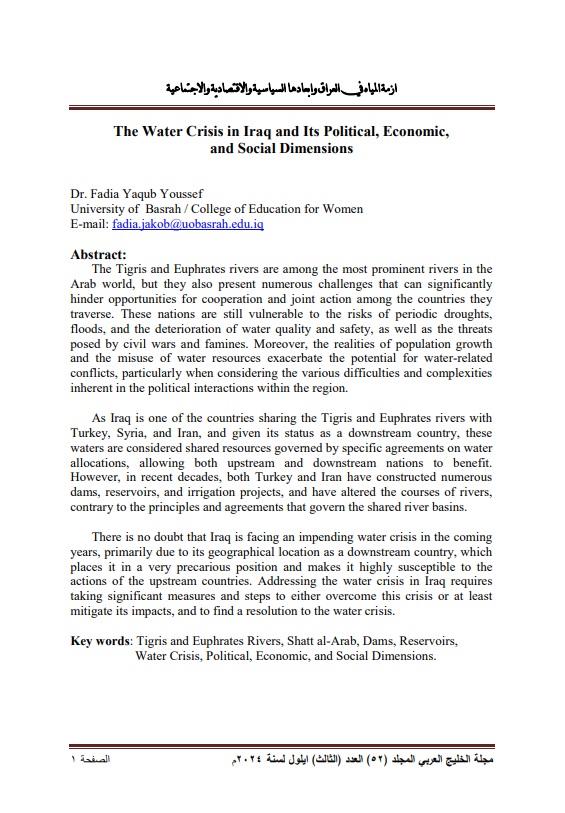The Water Crisis in Iraq and Its Political, Economic, and Social Dimensions
Keywords:
Tigris and Euphrates Rivers, Shatt al-Arab, Dams, Reservoirs, Water Crisis, Political, Economic, and Social DimensionsAbstract
The Tigris and Euphrates rivers are among the most prominent rivers in the Arab world, but they also present numerous challenges that can significantly hinder opportunities for cooperation and joint action among the countries they traverse. These nations are still vulnerable to the risks of periodic droughts, floods, and the deterioration of water quality and safety, as well as the threats posed by civil wars and famines. Moreover, the realities of population growth and the misuse of water resources exacerbate the potential for water-related conflicts, particularly when considering the various difficulties and complexities inherent in the political interactions within the region.
As Iraq is one of the countries sharing the Tigris and Euphrates rivers with Turkey, Syria, and Iran, and given its status as a downstream country, these waters are considered shared resources governed by specific agreements on water allocations, allowing both upstream and downstream nations to benefit. However, in recent decades, both Turkey and Iran have constructed numerous dams, reservoirs, and irrigation projects, and have altered the courses of rivers, contrary to the principles and agreements that govern the shared river basins.
There is no doubt that Iraq is facing an impending water crisis in the coming years, primarily due to its geographical location as a downstream country, which places it in a very precarious position and makes it highly susceptible to the actions of the upstream countries. Addressing the water crisis in Iraq requires taking significant measures and steps to either overcome this crisis or at least mitigate its impacts, and to find a resolution to the water crisis.




